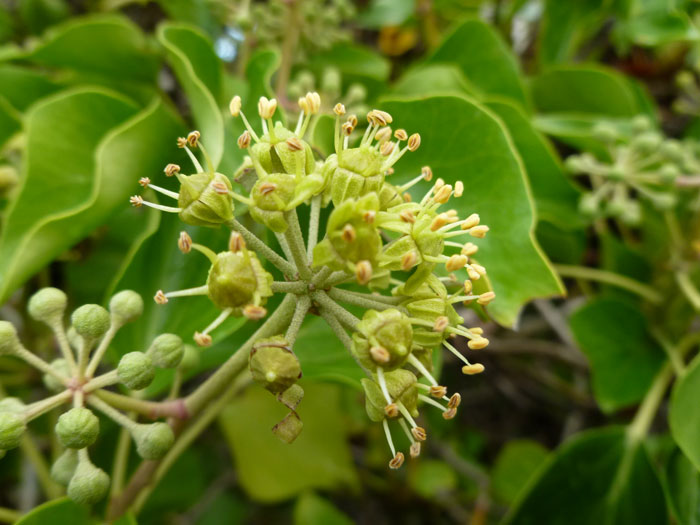Bee Lunch: English Ivy an Unavoidable Invasive
I have heard that there are parts of the world that love ivy and patiently nurture it to grow on gardens walls and trellises. Here in the Pacific Northwest it is like a creature from a bad Halloween movie slowly killing off native plants and consuming forests despite all efforts at eradication. However, ignoring the chaos it creates in our gardens and wild areas for a moment, it does have a few benefits for wildlife and bees. Ivy blooms provide both nectar and pollen from October to November in abundance for the bees to collect and backfill the brood-nest. Ivy doesn’t get phased by rain or the chilly nights that will kill off that last of the late summer flowers. Honey made form ivy nectar is known to crystalize quickly and while we may not like the taste the bees are happy to have something eat in those cooler fall and winter months and the pollen collected will be some of the last until spring. The berries ivy produce are also eaten by birds which unfortunately just helps to further spread this plant. – Jeff Steenbergen
